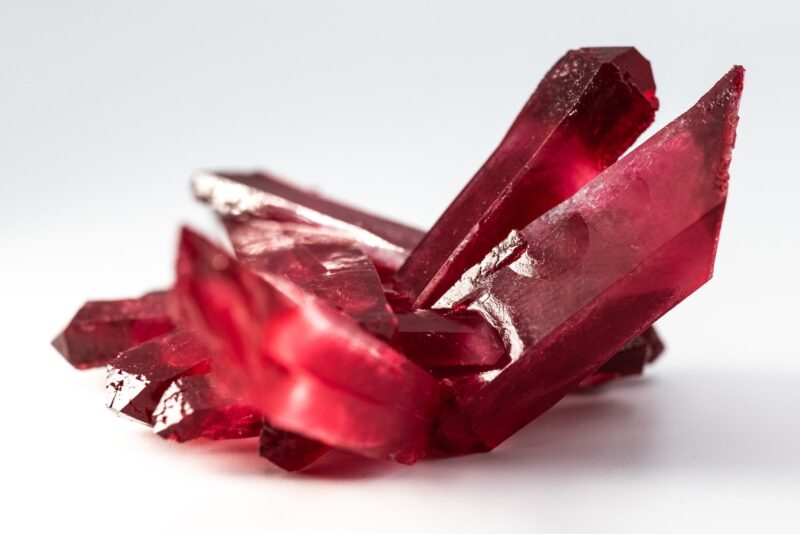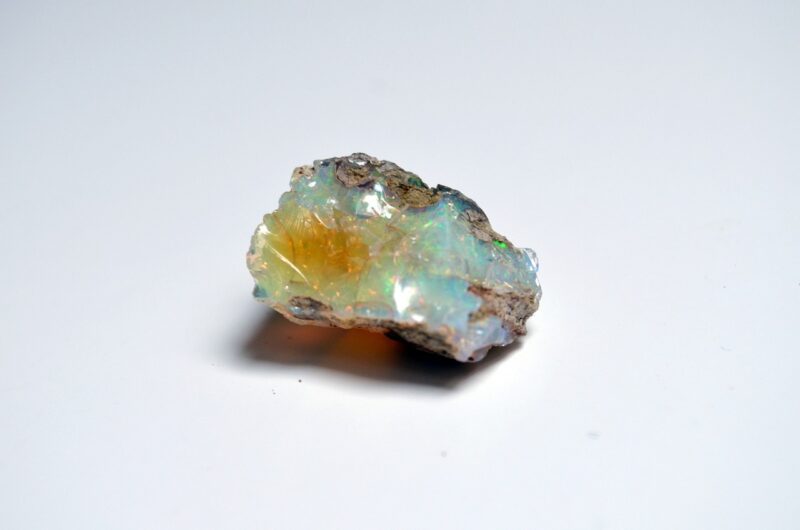Obsidian is a protective talisman for those who dare to see—the past, the future, or one’s own inner demons and darkest secrets. Nature’s glass formed from volcanic lava and hardened so quickly that it had no crystalline structure. It has no restrictions or limitations and acts quickly and powerfully. Its edge can be razor sharp, and its dark, glossy surface can be polished into a cold, hard glass, a “mirror stone” for those willing to peer deep into one’s inner soul, the subconscious, to expose one’s shadow self—flaws, vulnerabilities, phobias, and all. Obsidian sees through everything.
This shamanic stone can be harsh and direct, yet it also possesses great potential for catharsis and deep soul healing. It reveals the reasons for one’s flaws and causes of illness, as well as a clear image of the modifications required to correct them. It encourages growth and resolution while also providing solid support and guidance along the way. Obsidian is a powerful grounding stone that connects the base of the spine to the center of the earth. It is extremely protective, sheltering the user from negativity in the environment, from others, and from the inside.
Obsidian has been used since the Old Stone Age, and numerous cultures have relied extensively on it in their everyday, ritual, and spiritual lives. Obsidian’s conchoidal fracture allows it to break into pieces with curved surfaces and razor-sharp edges, and it has been found all over the world fashioned into arrowheads, spear points, knives, axe heads, scrapers, and other cutting tools. Pre-Columbian Mesoamericans created a macuahuitl, a sword with Obsidian blades set in a wooden body capable of inflicting horrendous damage, and Obsidian daggers were said to be used in bloodletting and human sacrifice. It was prized in the Middle East for its sharpness and precision in ritual circumcision; ancient Melanesians sharpened pointed pieces for tattooing the skin; and Rapa Nui (Easter Island) peoples made multipurpose tools called mata’a for food preparation and farming. They also used Obsidian as the pupils of the eyes in their famed Moai (statues) to bestow authority and a spiritual element on them.
Obsidian’s mystical properties stretch back to early civilizations, most notably Mesoamerica, due to its reflecting quality and ability to be polished into mirrors. These mirrors, which were either deep black or had a murky clarity, reflected shadow pictures and served as analogies for sacred caverns and pools of water. They were conduits for supernatural powers; to the Maya, they were a way to communicate with otherworld creatures; to others, they were a gateway to realms that could be viewed but not interacted with.
Obsidian was known as iztli or teotetl in ancient Mexico and surrounding regions, meaning “the divine stone,” and was used to carve amulets, jewelry, grave ornaments, and images of the god Tezcatlipoca, whose name means “smoking mirror,” and who was said to see everything that happened in the world and heavens through his Obsidian mirror. The Olmecs created concave mirrors capable of lighting fires, while the Maya and Aztecs wore Obsidian mirrors to demonstrate high rank and polished them into sheets for divining a person’s fate. Obsidian balls and flat mirrors were utilized for scrying in ancient Greek civilizations, while Native American societies employed Obsidian in spiritual rites to heighten inner vision.
Obsidian is formed from molten lava near the end of volcanic eruptions when the residual silica minerals flow to the surface and are super-cooled into glass before crystallization can occur. It is an amorphous material classified as a “mineraloid” with a hardness of 5 to 5.5 that is typically opaque except on thin edges. Obsidian is usually jet black, but it can also be dark brown, gray, or gray-green. Trace elements or inclusions, as well as the refraction of tiny gas bubbles, can produce rare color variations, marks, and iridescent or metallic “sheens.” The word obsidianus is an incorrect transliteration of obsianus, which means “the stone of Obsius,” the eminent Roman who found it. It is also known as “volcano glass,” “Inca mirror,” and “Iceland agate.” Obsidian is well-known for producing edges that are thinner and sharper than the best surgical steel, and it is now utilized in scalpels for some of the most accurate surgery.
Here are some of the most well-known Obsidian variations:
- Apache Tear
- Black Obsidian
- Gold Sheen Obsidian
- Mahogany Obsidian
- Peacock Obsidian
- Rainbow Obsidian
- Silver Sheen Obsidian
- Snowflake Obsidian
In summary, Obsidian is a good rescue cure for shock, traumas, and blockages, and it can be used to support the foot during times of unrest. It is a fantastic tool for therapists and counselors to use for fast getting to the bottom of a problem and absorbing energy released as a result of the problem. It absorbs environmental contaminants and prevents geopathic stress, and it should be washed under running water on a regular basis.
Obsidian is a very personal stone of protection that is usually purchased, held, and worn by one person only. It is an excellent talisman for protecting sensitive souls and compassionate spirits. Wear it as jewelry or carry it with you to deter others from unloading their issues or putting unreasonable demands on your time.





